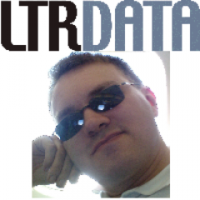Naah, it doesn't hurt at all  .
.
Everyone is free to have his/her own opinions and create his/her own "mental maps" of how things are, and name them whatever he/she likes  , the point is only about trying to find a "common ground" or "agreed upon terminology" to avoid misunderstandings when exchanging ideas/informations.
, the point is only about trying to find a "common ground" or "agreed upon terminology" to avoid misunderstandings when exchanging ideas/informations.
The cited "final statement" is not excessively lengthy, it consist of 10 points:
We can say with a righteous degree of approximation that:
- a disk contains partitions (up to 4 primary or up to 3 primary+1 Extended, which can contain 1 "logical volume" and up to 127 "sub-partitions", each containing a "logical volume")
- a primary partition contains a "volume" OR "extent" OR "drive"
- an extended partition normally contains a "logical volume" or "volume" or "extent" or "drive" (first one)
- an extended partition MAY contain one or more sub-partitions
- a sub-partition contains a "logical volume" or "volume" or "extent" or "drive"
- a filesystem is generally applied to any of "logical volume" or "volume" or "extent" or "drive", we can say that a "logical volume" or "volume" or "extent" or "drive" contains a filesystem
- a filesystem contains directories, files and sub-directories
- the terms "logical volume", "volume", "extent", "drive" ALWAYS identify a same physical range of sectors of the disk as defined in a partition table, and thus can be (and are) often used as synonyms. In the case of Primary partitions, also the term partition can be used as a synonym of "volume", "extent", "drive".
- since a "partition" or "logical volume" or "volume", "extent", "drive" is pretty much useless without a filesystem applied to it, often the term "filesystem" is used - somewhat IMproperly - as a synonym to "partition" (primary only) or "logical volume" or "volume", "extent", "drive".
- Dynamic disks are NOT Basic disks and they are DIFFERENT
The way an Extended partition "contains" either one logical volume or more than one sub-partitions, each containing a logical volume, is actually "complex" and possibly the only good thing  about GPT is that all partitions are Primary, thus the equation:
about GPT is that all partitions are Primary, thus the equation:
primary partition=logical volume=volume
can be simplified to
partition=logical volume=volume
and the new definition I adopted later that:
... a volume is the *whatever* gets (or can get) a drive letter assigned in windows ...
is simple enough, as I see it.
For GPT disk it is IMHO just a matter of adding  :
:
0.Points #1 to #10 were stated with reference to MBR disks, but considered the added points #11 and #12, points #1 to #5 do not apply to GPT disks, while points #6 to #10 apply to both MBR and GPT disks.
...
11. for GPT disk all partitions are primary
12. instead of a 4 entry partition table in the MBR there is a similar address table (without a real limit in number of entries, but usually set to 128 entries)

Wonko















